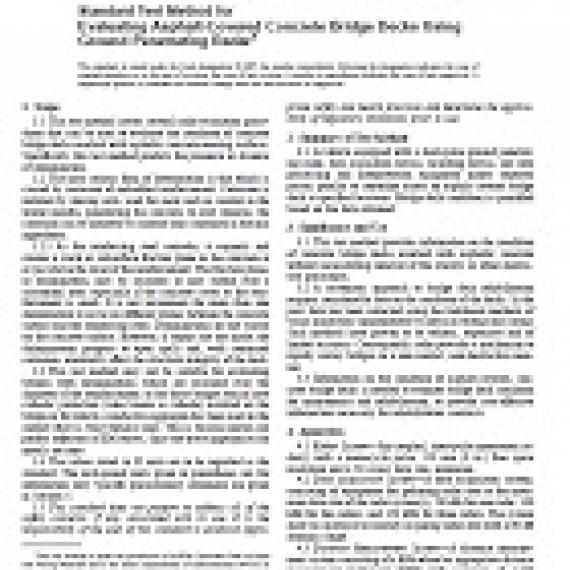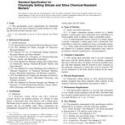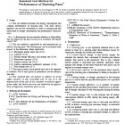No products
ASTM D6087-97(2001)
ASTM D6087-97(2001) Standard Test Method for Evaluating Asphalt-Covered Concrete Bridge Decks Using Ground Penetrating Radar
standard by ASTM International, 03/10/1997
Full Description
1.1 This test method covers several radar evaluation procedures that can be used to evaluate the condition of concrete bridge decks overlaid with asphaltic concrete wearing surfaces. Specifically, this test method predicts the presence or absence of delamination.
1.2 The most serious form of deterioration is that which is caused by corrosion of embedded reinforcement. Corrosion is initiated by deicing salts, used for snow and ice control in the winter months, penetrating the concrete. In arid climates, the corrosion can be initiated by chloride ions contained in the mix ingredients.
1.2.1 As the reinforcing steel corrodes, it expands and creates a crack or subsurface fracture plane in the concrete at or just above the level of the reinforcement. The fracture plane, or delamination, may be localized or may extend over a substantial area, especially if the concrete cover to the reinforcement is small. It is not uncommon for more than one delamination to occur on different planes between the concrete surface and the reinforcing steel. Delaminations are not visible on the concrete surface. However, if repairs are not made, the delaminations progress to open spalls and, with continued corrosion, eventually affect the structural integrity of the deck.
1.3 This test method may not be suitable for evaluating bridges with delamination which are localized over the diameter of the reinforcement, or for those bridges which have cathodic protection (coke breeze as cathode) installed on the bridge or for which a conductive aggregate has been used in the asphalt (that is, blast furnace slag). This is because metals are perfect reflectors of EM waves, since the wave impedances for metals are zero.
1.4 The values stated in SI units are to be regarded as the standard. The inch-pound units given in parentheses are for information only. Specific precautionary statements are given in Section 5.
1.5 This standard does not purport to address all of the safety concerns, if any, associated with its use. It is the responsibility of the user of this standard to establish appropriate safety and health practices and determine the applicability of regulatory limitations prior to use.


































